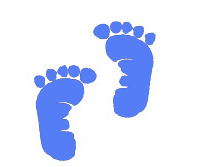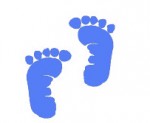Blame it on the lack of ROI, the size of the market, or the complexity involved in product design. Or, is it the lack of incentive? Whatever the reasoning may be, the unmet need in pediatric devices is very real. The majority of medical devices are not specifically designed for children, leaving clinicians with limited options, as they must often resort to adapting products to treat the pediatric population.
“Children are not small adults,” said Charles Berul, M.D., division chief of cardiology and co-director of the Children’s National Heart Institute, at the AdvaMed 2015 conference in San Diego earlier this week. Although this may seem like an obvious statement, the fact that there aren’t many medical device companies developing products for this particular population is cause for concern.
Why aren’t more manufacturers designing devices specifically for children? “Currently, there is little incentive or business model for pediatric devices,” said Berul. Innovation in medicine is driven by both need and the size of a market, and the demand for pediatric devices doesn’t always cover the necessary R&D investment required to bring these devices into the market, according to Mark Carlson, MD, vice president of global clinical medical affairs at St. Jude Medical. He added that the size of the adult market for devices dwarfs that of the pediatric market.

The pediatric population itself is challenging both from the perspective of the small patient anatomy as well as the small sample size. Not a lot of patients have the rare diseases that require specialized devices. Carlson cited CDC statistics: Each year, just 3% of U.S. babies (about 120,000) are born with any of 45 types of birth defects. And while 70% of the U.S. population is over 21 years of age, those who are younger than 21 years account for a significant minority of hospitalizations each year. Given this small sample size, are companies losing money as opposed to making it back? Children are not getting the devices they truly need, because there isn’t an ROI on such products, said Carlson.
The pediatric medical device space lags behind by as much as 10 years. From a product design perspective, there are much more intricacies involved in creating devices and components for use in children. And although some products have been miniaturized, most are not small enough for infants. “Devices need to behave differently than if they were used in a larger human being,” said Carlson. Consider implanting a device in a newborn. The product might not behave in the same way in 10 years. A pacemaker, for example, does not grow with the patient.

Industry Working to Advance Pediatric Technologies
In 2007, Congress recognized the need to improve the process for developing devices for the pediatric population with the Pediatric Medical Device Safety and Improvement Act. The bill established a non-profit consortia to encourage device development in this area. Last year, FDA issued a guidance for pediatric uses of medical devices, part of which serves to help companies in using data from clinical trials involving adults to help support approval for pediatric devices. And just last month, FDA awarded 18 grants totaling more than $19 million to address rare diseases. Ten of the 18 awards will be used to fund studies (i.e., involving sickle cell disease and a device to treat acute kidney injury) that enroll pediatric patients, including newborns.
According to Eric Chen, director of FDA’s Humanitarian Use Devices Program, the agency has several initiatives that in some way are trying to foster technology development in pediatrics. In addition to doing a lot of outreach in this area, FDA initiatives include:
- Expedited access PMA program
- Extrapolation of adult data to pediatrics
- Flexible regulatory models of valid scientific evidence
- De Novo classification process
- Medical Device Innovation Consortium
- CDRH Innovation Pathway
- Providing information about pediatric uses of medical devices through the agency’s guidance document
The speakers at the AdvaMed conference pointed to a range of organizations that are forming partnerships and working to elevate awareness for both the development of pediatric technologies as well as the conditions themselves, including:







